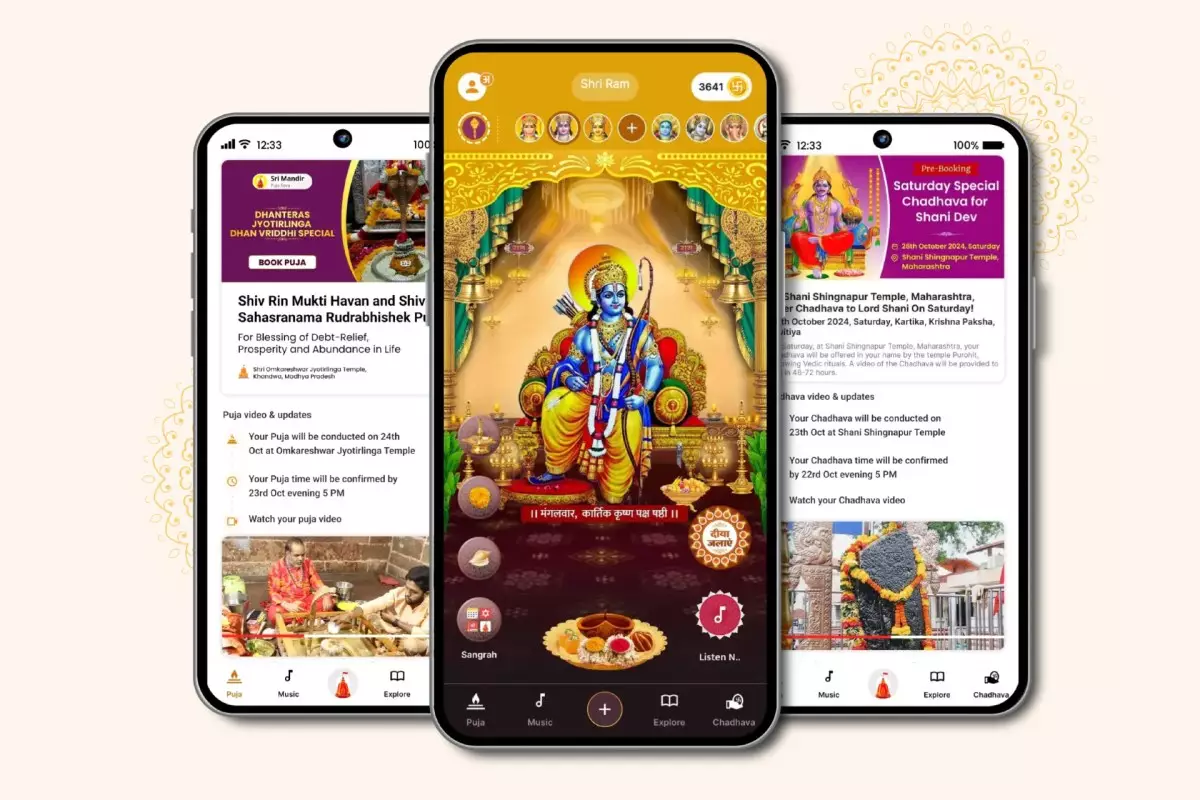In a country where spirituality is deeply woven into daily life, the confluence of tradition and technology is not only inevitable but necessary. India’s Hindu temple ecosystem, immense both in scale and cultural significance, has largely operated in a fragmented offline world despite its vast economic and social footprint. Enter Sri Mandir, an innovative digital platform from the startup AppsForBharat, that offers a seamless online experience for Hindu devotees to engage with their faith. Since its inception in late 2020, this app has rapidly become a powerful catalyst for modernizing religious worship, attracting millions of users and capturing significant investor interest worth over $38 million in funding rounds to date.
Bridging the Offline Gap in a Massive Market
India boasts an astonishing 53 temples for every 100,000 people, highlighting a deeply ingrained culture of temple visits and rituals. The government estimates the Hindu temple economy at around ₹3.02 trillion ($40 billion), a noteworthy 2.3% of the nation’s GDP. Yet the services surrounding prayers and offerings remained overwhelmingly offline—scattered, manual, and often inaccessible to many, especially during times of mobility restrictions or for the diaspora living abroad.
AppsForBharat’s Sri Mandir app directly addresses this disconnect by digitizing these rituals. It creates a unified platform where devotees can perform prayers and make offerings virtually to over 70 temples across India. Having accrued more than 40 million downloads and sustaining a monthly active user base of 3.5 million, the app proves that religious engagement need not be confined to physical spaces. This digital gateway democratizes access to spiritual practices, effectively enabling millions to experience rituals anytime, anywhere.
Understanding User Dynamics and Market Reach
One of Sri Mandir’s distinguishing features is its ability to cater both to local Indian users and the global Hindu diaspora, a market often neglected by traditional temple services. Although 90% of its users remain domestic, nearly 20% of its revenue stems from international devotees in countries with significant Indian expatriate communities like the U.S., U.K., UAE, Canada, Australia, and New Zealand. Remarkably, the diaspora’s average spending per user is nearly ten times higher than that of Indian users, reflecting their strong desire to maintain cultural and religious ties despite geographical distance.
Demographically, India’s users span tier-1 and tier-2 cities almost equally, with a younger audience under 35 accounting for 30% of users. The overseas user base skews older, predominantly above 30 years, emphasizing a different usage pattern—more intensive engagement through simultaneous prayers and offerings.
Yet, the app does not merely replicate physical rituals online—it innovates with features that foster continuity and retention. A retention rate of about 55% after six months defies norms in the app ecosystem, hinting that the religious behavior it taps into is recurrent and deeply personal, occurring multiple times annually. This consistent user engagement underpins the platform’s robust business model.
Competing and Conquering in a Niche Market
Despite the emergence of competitors trying to capture a slice of the religious tech market, Sri Mandir stands far ahead, commanding roughly 80%+ of cumulative installs within its category. Unlike its role in some global categories, competition here hasn’t fragmented the user base significantly. The startup applies a commission model with temples, typically taking 20-25% of the offerings facilitated through the app. Importantly, this digital collaboration also boosts temple revenues by up to 25%, highlighting a win-win dynamic.
Expanding beyond prayers and offerings, AppsForBharat is exploring merchandising from famous temples, indicating strategic diversification. Given the scale and unique market dynamics, such expansions show promise in creating additional revenue streams while deepening devotees’ connection with their faith.
The Broader Market and Future Opportunity
Globally, religious apps saw a modest increase in engagement in early 2025. However, India’s religious app market surged ahead spectacularly, with the top apps registering a 60% rise in monthly active users. Although Sri Mandir recently relinquished the top spot among Indian religious apps to LifeChurch.tv’s Bible app at a global scale, it remains the uncontested leader in Hindu devotional services.
India’s religious tech sector itself is an emerging powerhouse, attracting over $50 million in investments in 2024 alone—peaking in a space traditionally dominated by the U.S. Such interest underscores the potential for cultural and faith-based tech startups to become integral players in India’s digital economy.
Strategic Growth and Innovation on the Horizon
With fresh funds, AppsForBharat has concrete plans to deepen its roots in India’s spiritual heartlands, investing in logistics and physical fulfillment hubs in temple-rich cities like Varanasi, Ayodhya, Haridwar, and Ujjain. This dual physical-digital hybrid model reflects a pragmatic understanding that devotional experiences are multifaceted, encompassing tangible ritual items as well as virtual services.
Moreover, the company is harnessing artificial intelligence to enhance user interaction, enabling devotees to query faith-based questions through AI-powered assistants. Given the sensitivities around religious content, this technology is being developed with expert oversight to avoid misinformation, addressing a crucial challenge in digital spiritual counseling.
CEO Prashant Sachan’s ambition to reach 500 temples on the platform, expand staff to 400, and pursue profitability by 2027-28 demonstrates a measured but optimistic growth trajectory. Although the IPO timeline remains undefined, the startup’s vision signals the evolution of religious tech from a niche category to a mainstream digital service segment in India’s booming startup ecosystem.
My Take: The Digital Sacred Space Need Not Sacrifice Depth
While skeptics may view the monetization of religious acts as controversial or commercialization of faith, Sri Mandir exemplifies how technology can nurture spirituality by making sacred practices more accessible without compromising depth. The startup’s approach illustrates that respectful integration of tech and tradition can empower devotees, create economic value for temples, and preserve cultural heritage in an increasingly digital age.
The challenge ahead lies in balancing growth with authenticity—expanding offerings without trivializing age-old rituals. What’s compelling here is how Sri Mandir harnesses the intrinsic motivation of faith, ensuring users engage beyond superficial app usage, fostering genuine religious participation. This nuanced model, if sustained, might just be the blueprint for faith tech innovations globally—where technology amplifies, rather than replaces, the essence of devotion.

